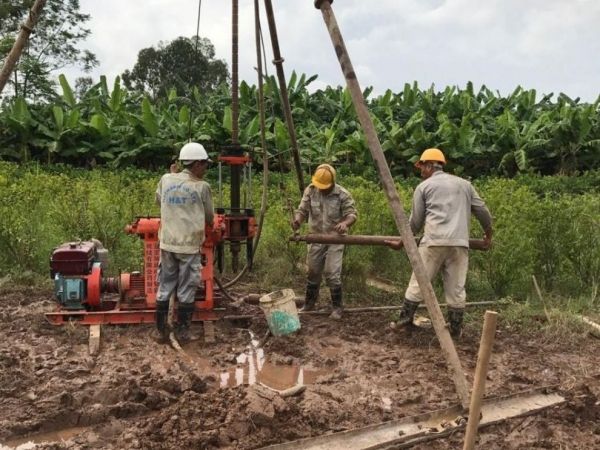Toxic arsenic in groundwater is a huge problem for more than a hundred million people worldwide, especially in Southeast Asian countries such as Bangladesh and Vietnam. The arsenic is released by the activity of microorganisms. A team of researchers in the field of geomicrobiology led by Professor Andreas Kappler from the University of Tübingen has now shown that these bacteria do not use food sources from the earth's surface, as was previously assumed, but from deep layers of rock. This new knowledge about the major pathways and processes of arsenic release will help to more precisely predict future drinking water contamination and prevent it if possible. The study has been published in the journal Environmental Science and Technology.
Large quantities of arsenic-containing iron minerals can be found in the subsoil of many regions of Southeast Asia. Aquifer sediments are home to communities of microorganisms, which can dissolve iron minerals and release the toxic arsenic. To do this, the microorganisms need organic material as food. "Previously, it was assumed that organic material from the surface – such as plants or algae from ponds and lakes – enables the microorganisms to dissolve the arsenic-containing iron minerals and thus release the arsenic," says Andreas Kappler. However, in many groundwater systems there are indications that the organic material does not penetrate down from the surface to the arsenic-containing layers.
In the new study, the Tübingen scientists, together with colleagues from Zurich, Karlsruhe and Berlin, investigated the relevant processes at a village with arsenic-contaminated water, in VanPhuc, 15 kilometres south-east of Hanoi in Vietnam. There, drill cores were taken of fresh subsoil material from depths of more than 40 meters. The research team examined how much organic material was present in the deep rock layers, where it came from, and whether the microorganisms present could use it as a source of food and energy. Experiments carried out in the laboratory in Tübingen enabled the researchers to identify the metabolic processes taking place – and what the various bacteria eat.
Continue reading at Tübingen University
Image via Tübingen University


